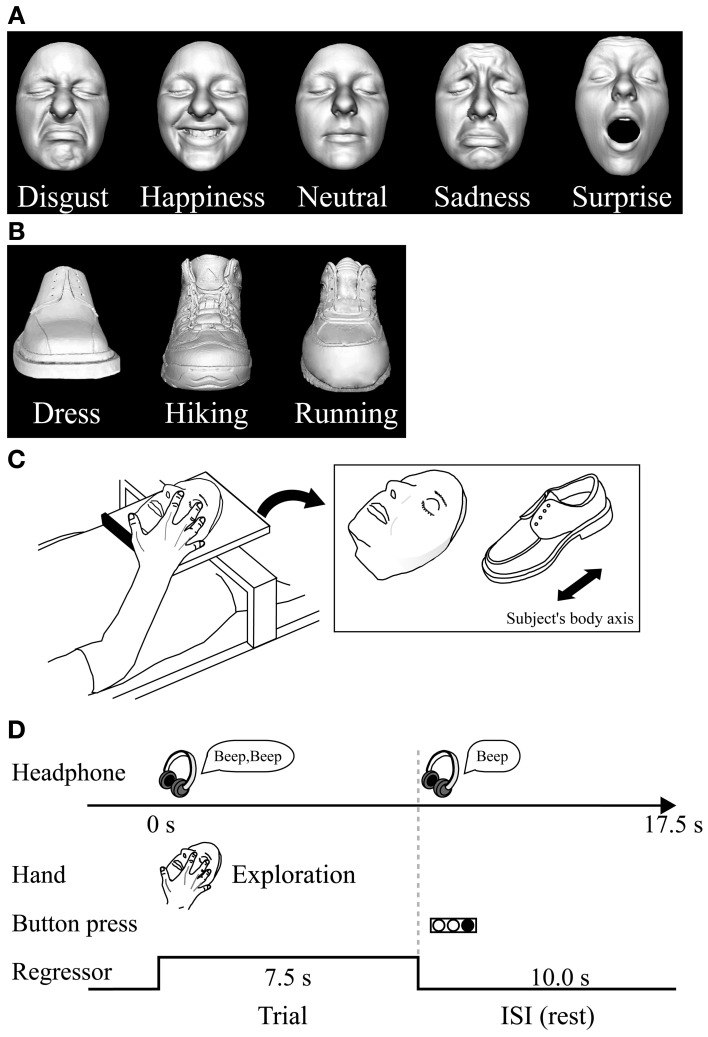Figure 1.
Haptic task. (A) Plastic masks, each portraying five different expressions, were utilized as stimuli in the psychophysical experiment. (B) The fMRI experiment used plastic masks expressing disgust, happiness, and neutral; three types of shoe (plastic casts) were used as control objects. (C) In the fMRI experiment, each exemplar was mounted on a plexiglass table. The orientation of the objects as they were presented on the table is shown on the right. (D) Task schedule for the fMRI experiment. Subjects were instructed to explore the object with their right hand immediately after they heard a sound cue though headphones. When another sound cue was presented (after 7.5 s of exploration), the subjects were told to stop. They were instructed to respond immediately by using their left hand to press the button corresponding to the appropriate numeric code for the subordinate-level category presented. Neural activity during the task block was modeled with a box-car function for each object category (i.e., face and shoe). The regressor shown was convolved with a canonical hemodynamic-response function.

